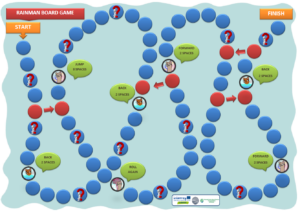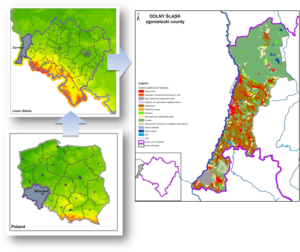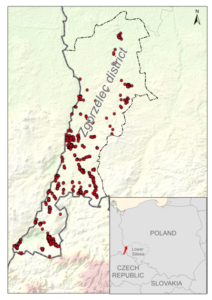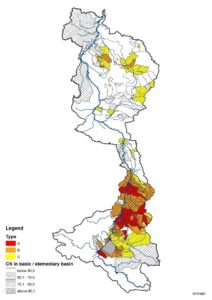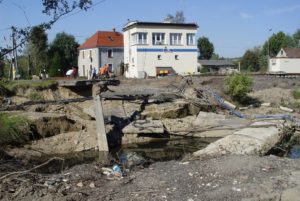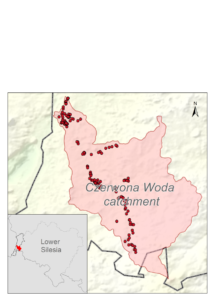Our story from LOWER SILESIA, POLAND

In Poland, the Institute of Meteorology and Water Management National Research Institute together with associated partners: The Institute for Territorial Development, State Water Holding Polish Waters and the Regional Water Management Board in Wrocław support the RAINMAN project in the field of methodology for developing hazard maps, analysing good practices to reduce the risk of heavy rain and developing a contribution of the concept of retention and the catalogue of good practice and action plans in the field of spatial planning. Lesson packages have been developed for use at school workshops that have been preceded by a survey of the territory at several interested schools. Moreover, cooperation to raise awareness about climate change and extreme weather phenomena, with particular emphasis on heavy rains, is implemented at local, regional and international level.
OVERVIEW
Activities:
- assess and map risks
- communicate risks (Lower Silesia)
- identify risk reduction measures (Lower Silesia)
Land use:
- urban, rural , agricultural (Lower Silesia)
- rural – semi-urban (Zgorzelec county)
- rural (Czerwona woda catchment)
Land form / terrain:
- hilly, lowland
LOWER SILESIA
Lower Silesia is the northwestern part of the historical and geographical region of Silesia located in generally in the middle River Odra basin with its historic capital in Wrocław. The region area is 19946 km2, population 2.908.00 inhabitants. Altitude of Lower Silesia varies within 69 to 1.603 m above sea level. The northern part of the area is lowland covering about 75 % of the region, following the south the lowlands changes into the highlands (Sudety Foreland), while in the south of the area there are the Sudety Mountains with the highest peak Śnieżka. Natural hazards affecting Lower Silesia are typical for moderate latitudes regions like: heat and cold waves, thunderstorms, droughts, floods, strong wind and heavy rain.
Historical data carried out during the KLIMAT project confirmed a large number of heavy rain events that occurred in the Lower Silesia province within the years 1971-2010 (http://klimat.imgw.pl/).
Activities in the pilot area include involvement in the development of 3 tools: assessment and mapping (tool 1), risk communication (tool 2) as well as risk reduction measures (tool 3). In tool 1, hazard maps are developed (described in detail and carried out in two locations: Zgorzelec county and Czerwona Woda catchment). In tool 2, lesson packages to use in workshops for students that were already tested in interested schools in Lower Silesia region are developed. In tool 3, the good practices in reducing the risk of heavy rain as well as the retention concept are developed. Also a catalogue of activities in all pilot areas and an action plan for spatial planning is being prepared.
Tool 1: Assessment and mapping
Assessment and mapping: In this tool the analyses were focused on developing: Flash flood hazard and vulnerability map and the map of areas with soil prone to water erosion. The analyses were the basis to indicate the hazardous areas. All actions taken under this tool have been described in detail and carried out in two locations: Zgorzelec county and Czerwona Woda catchment.
Tool 2: Risk awareness and communication
Awareness-raising activities were undertaken by preparing lessons for school children about the phenomenon of intensive rainfall and how to deal with the risks associated with it, along with conducting these lessons in schools in the pilot area. The package of the training kit about heavy rain issues for teaching school children consists of:
- Lesson 1 – Evaluation of heavy rain risk (presentation and teaching instruction);
- Lesson 2 – Methods for dealing with floods caused by heavy precipitations (presentation and teaching instruction);
- Board game;
- Questionnaire.
The cycle (1+2 Lessons) of the proposed education package concerns problems of climate changes and the risk of one of the most extreme weather events – floods, including those caused by heavy rains. The participants will be acquainted with: basic information, current results related to weather phenomena (trends) indicating climate changes, possible consequences of extreme weather events, methods for approaches to risk evaluation related to floods caused by heavy rains, methods for reaction and prevention against potential flood effects (concerning material losses in a private and public sector, possible injuries or even deaths). Reference to RAINMAN project results can encourage the recipients to use the RAINMAN-Toolbox as a source of various information increasing awareness and how to deal with heavy rain risk.
Prepared supplement materials, i.e. the board game and a banner, aim to disseminate the idea of the Toolbox and to consolidate basic knowledge connected with this problem while answering questions included in the cards of the board game. The questions on the cards refer to the topic of both lessons. Most important is to make a recipient aware that the problem of heavy rain cannot be disregarded and various measures can be undertaken in order to prevent their negative effects.
Furthermore, collaboration in raising awareness activities regarding climate change and extreme phenomena, with particular emphasis on heavy rain took place at local, regional and international levels.
Tool 3: Risk reduction measures
As part of the tool, numerous examples of good practices that allow rainwater retention were identified, and will be included in the catalogue of measures and in the concept of water retention.
Another activity under risk reduction measures is the catalogue of good practices titled “Heavy rain risk management good practices developed by the experience of the pilot regions in Central Europe”, which describes the achievements and implementations of the RAINMAN project partners in pilot regions. The catalogue of good practices is directed to and will be disseminated among stakeholders and decision makers in the pilot action area Lower Silesia.
Also, the action plan developed under tool 2 for the implementation of non-technical measures (such as land use, retention) is one of the possibilities to limit the effects of extreme events. Recommendations for spatial planners and end-users on prioritizing activities as the basis for optimizing land use and flood protection strategies can be an important element in the development of regional strategy of a given area exposed by extreme phenomena.
BROWSE OUR STORIES
- All
- Assessment and mapping
- Risk communication
- Risk reduction measures
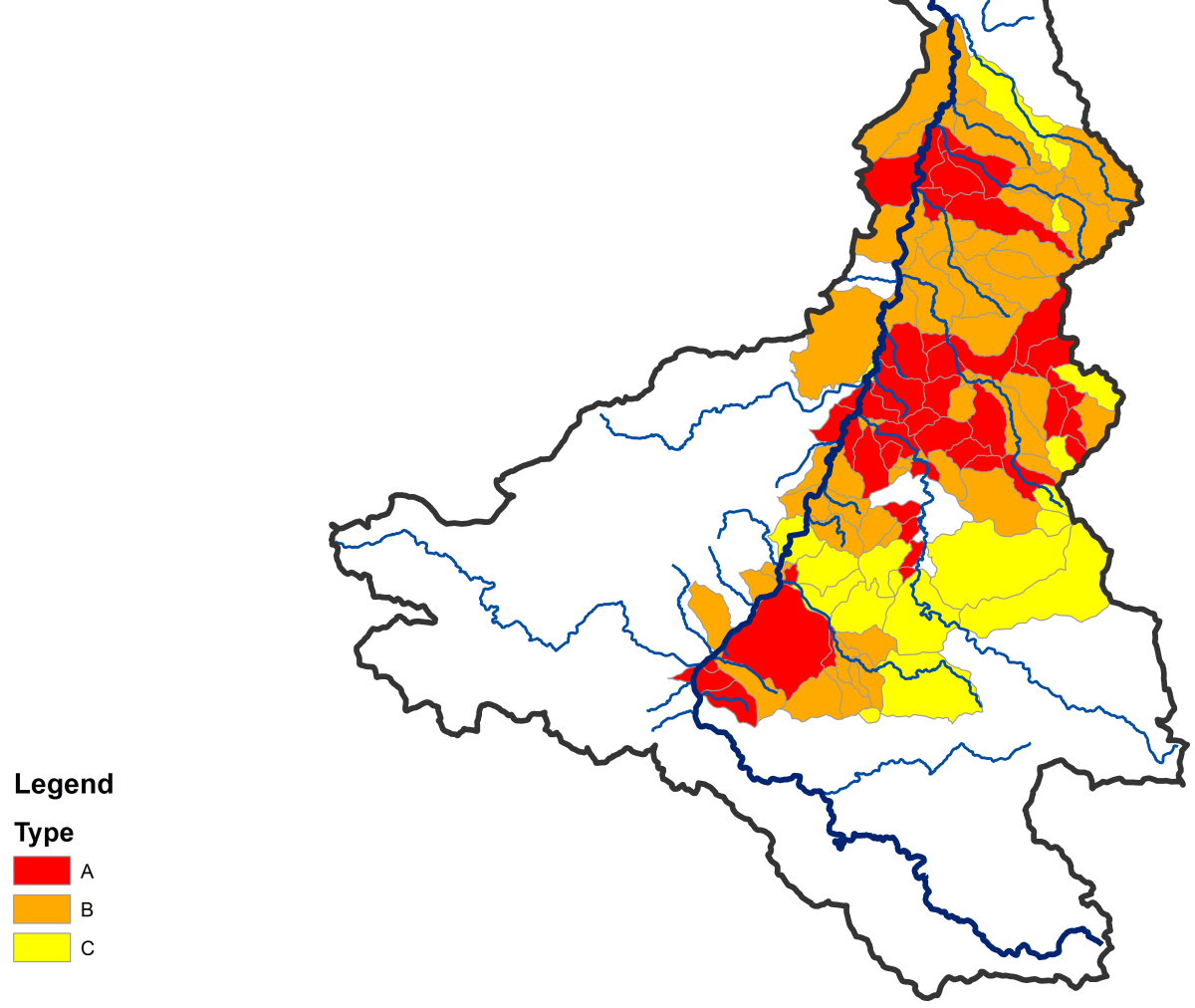
Flash flood hazard and vulnerability maps
– for Lower Silesia
Read more in English [pdf, 220 KB]
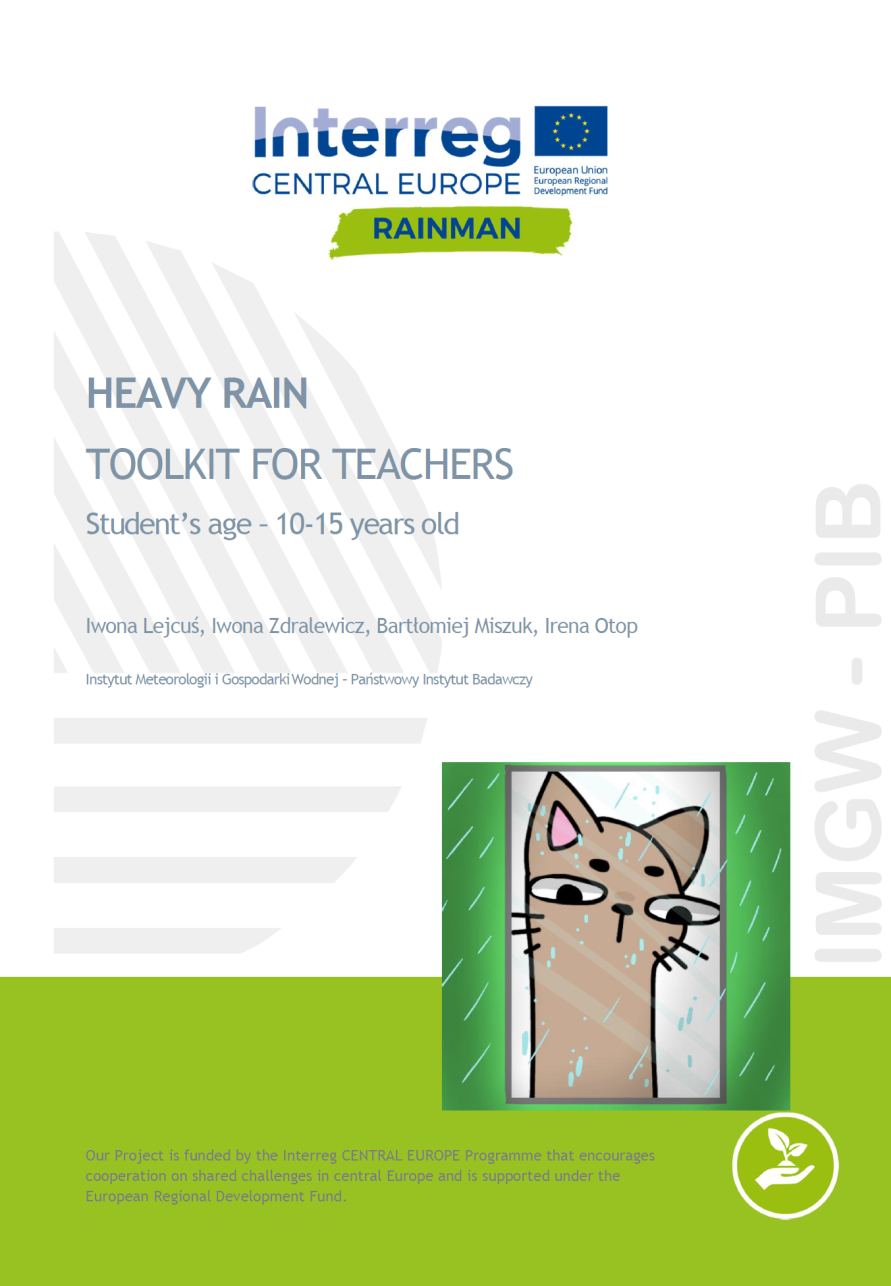

Teaching instruction
– for two lessons
Read more in English [pdf, 199 KB]
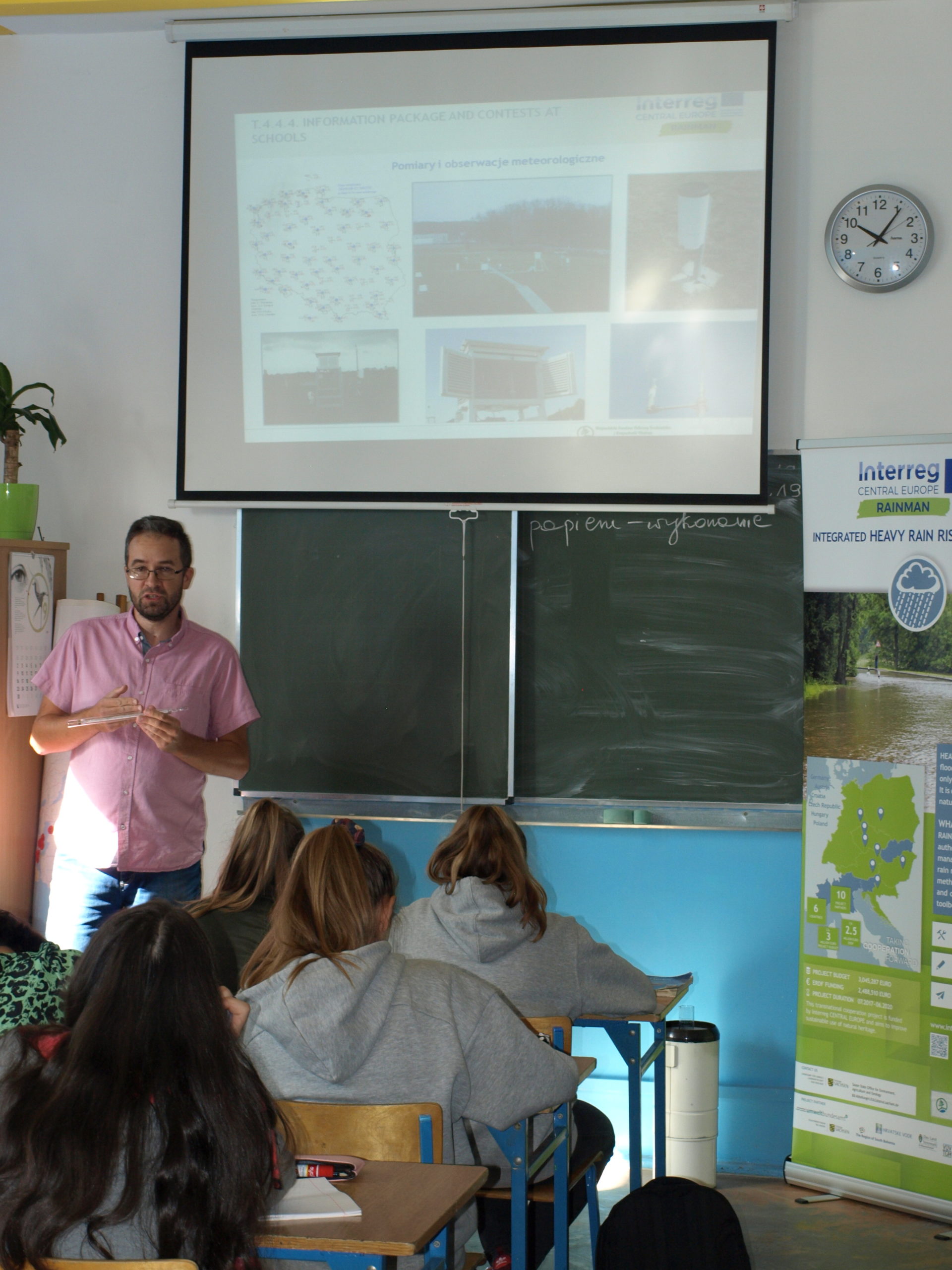

Presentation for lesson 1
– topic “Heavy rain risk”
Read more in English [pdf, 242 KB]
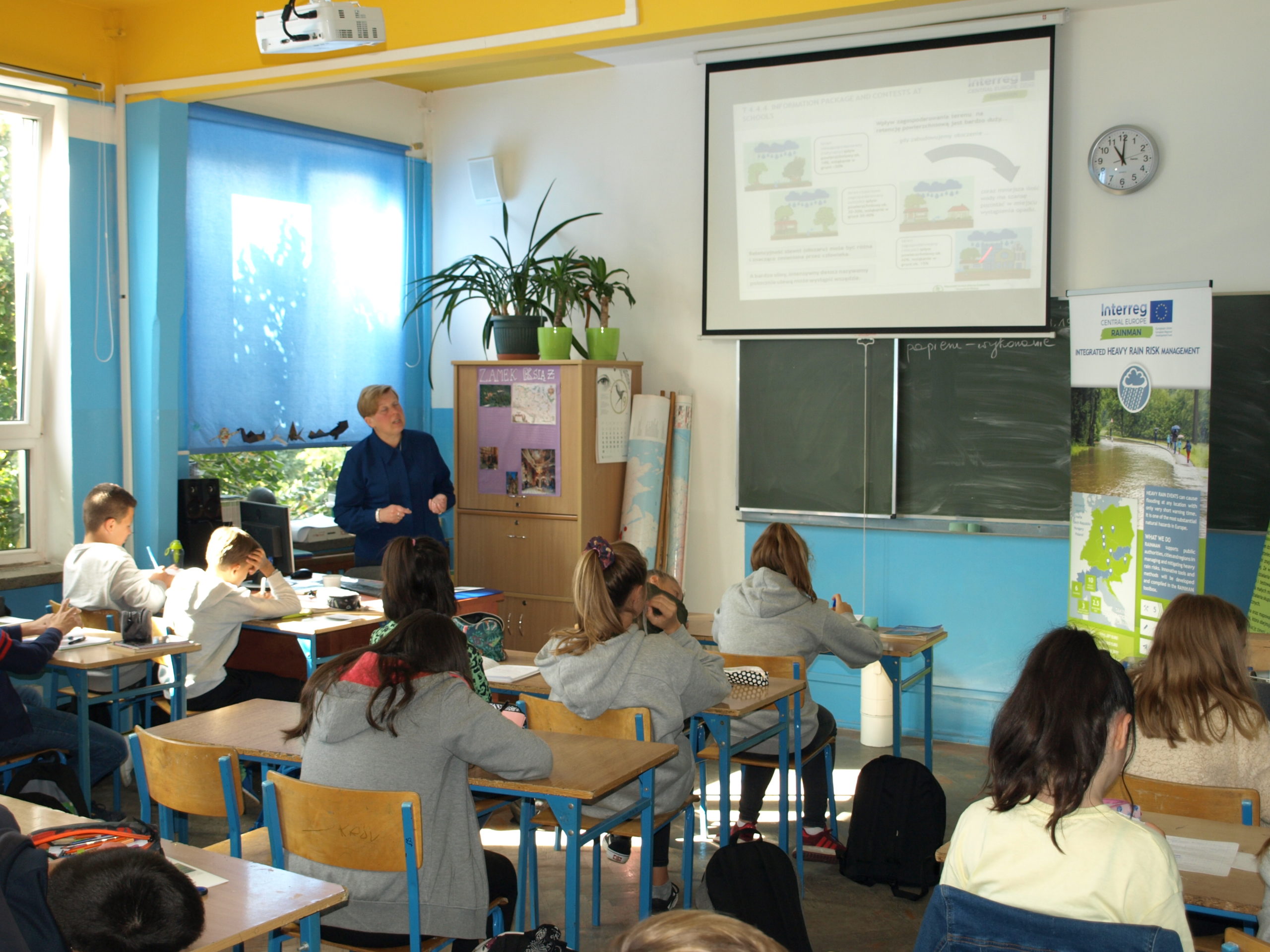

Presentation for lesson 2
– topic “Ways of dealing with floods after heavy rainfall”
Read more in English [pdf, 253 KB]


Board game
– with question cards
Read more in English [pdf, 216 KB]
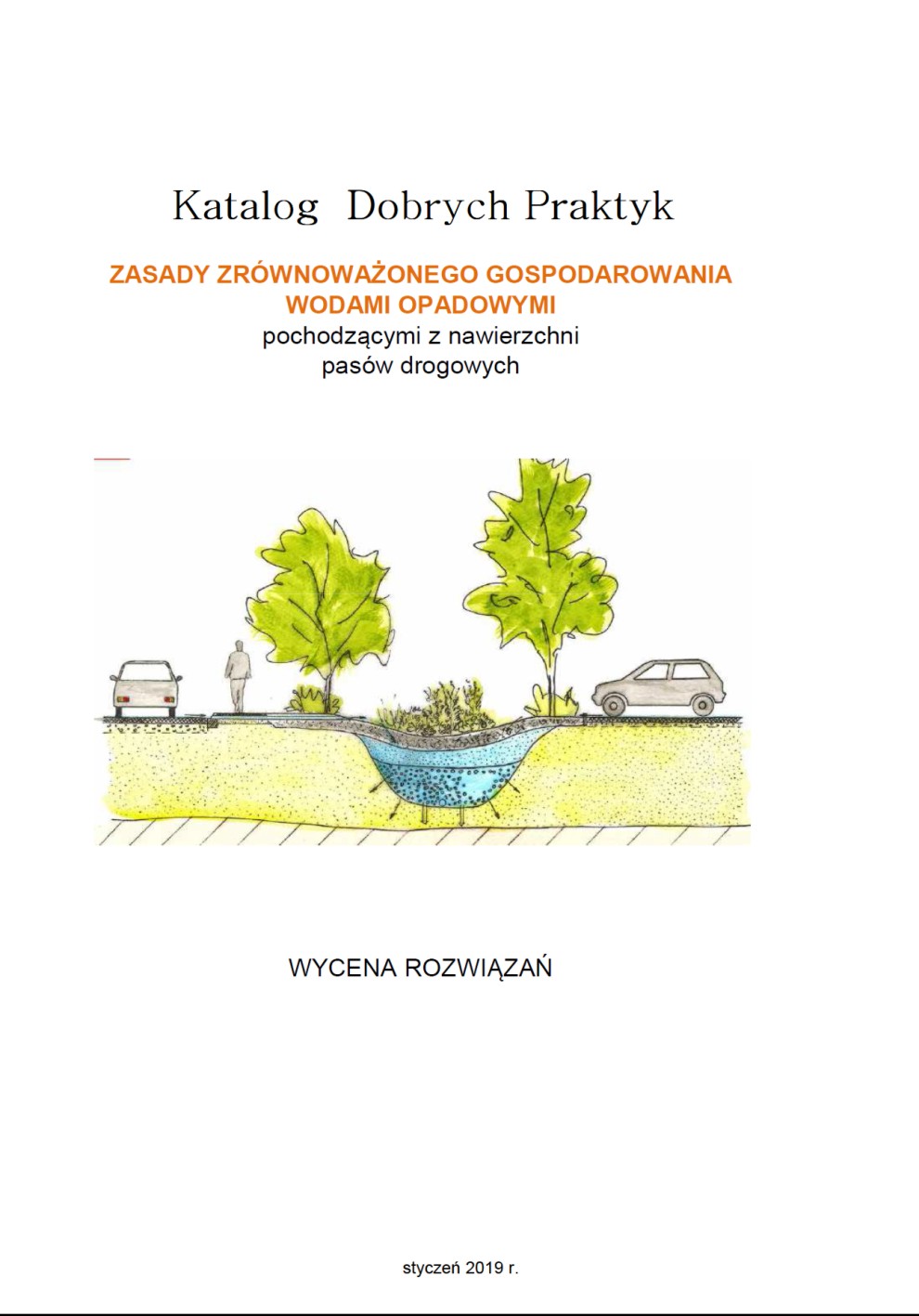

Price estimation
– for solutions from the “Good Practice Catalogue –the Rules for Sustainable Management of Rainwater from Road Surface”
Read more in English [pdf, 239 KB]
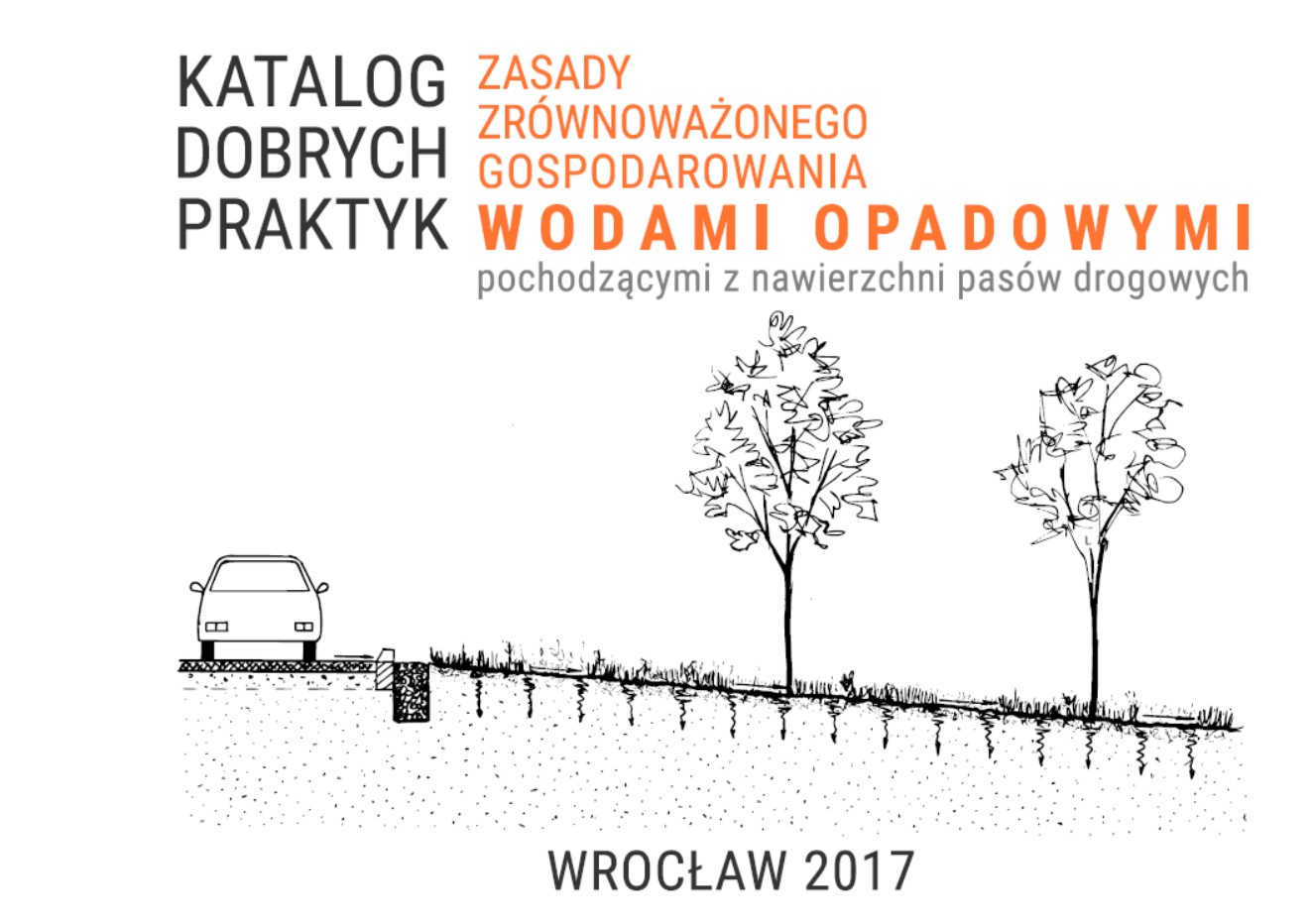

Good Practice Catalogue
– the Rules for Sustainable Management of Rainwater from Road Surface
Read more in English [pdf, 235 KB]
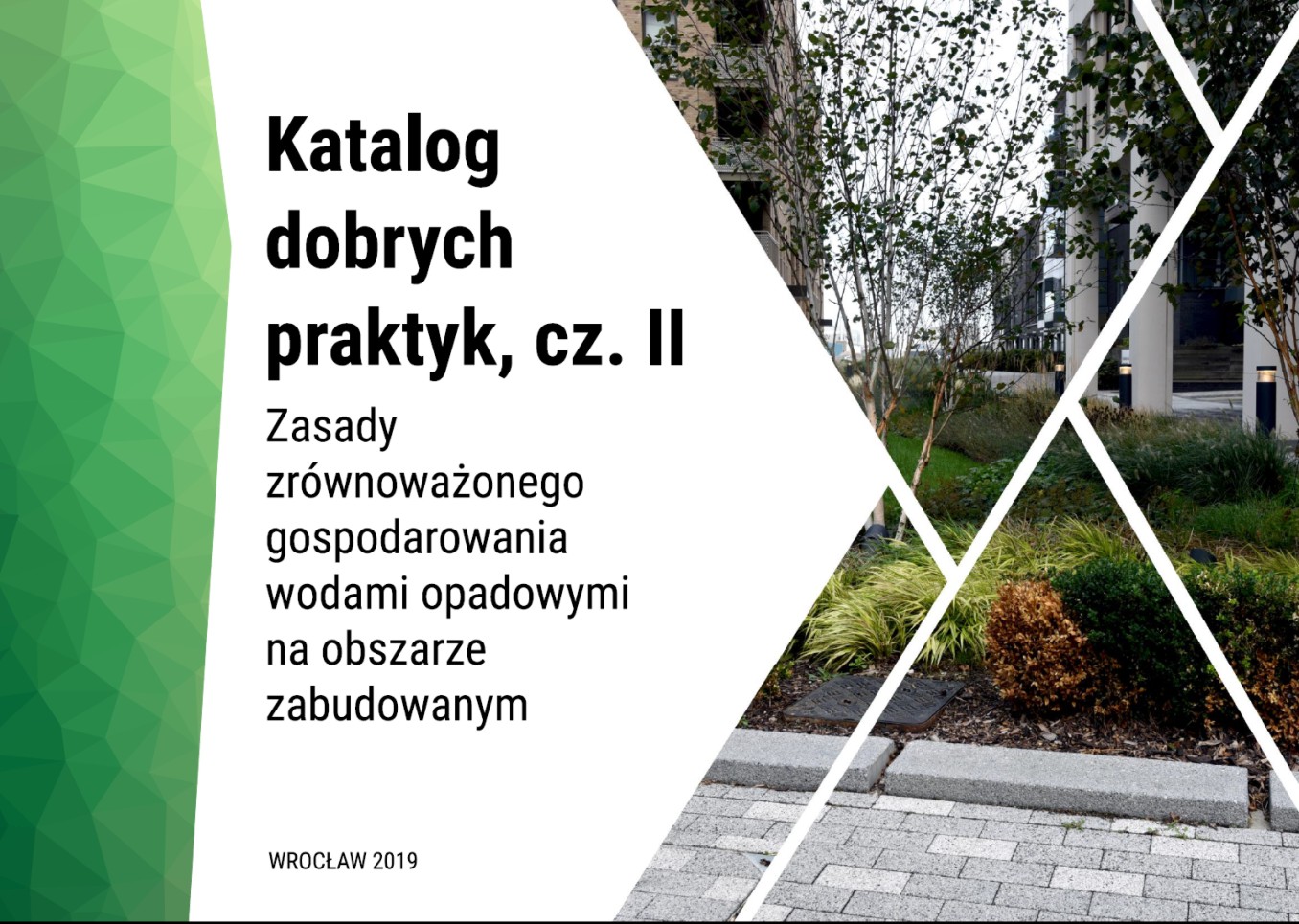

Good Practice Catalogue
– the Rules for Sustainable Management of Rainwater in an urbanized area (part II)
Read more in English [pdf, 242 KB]
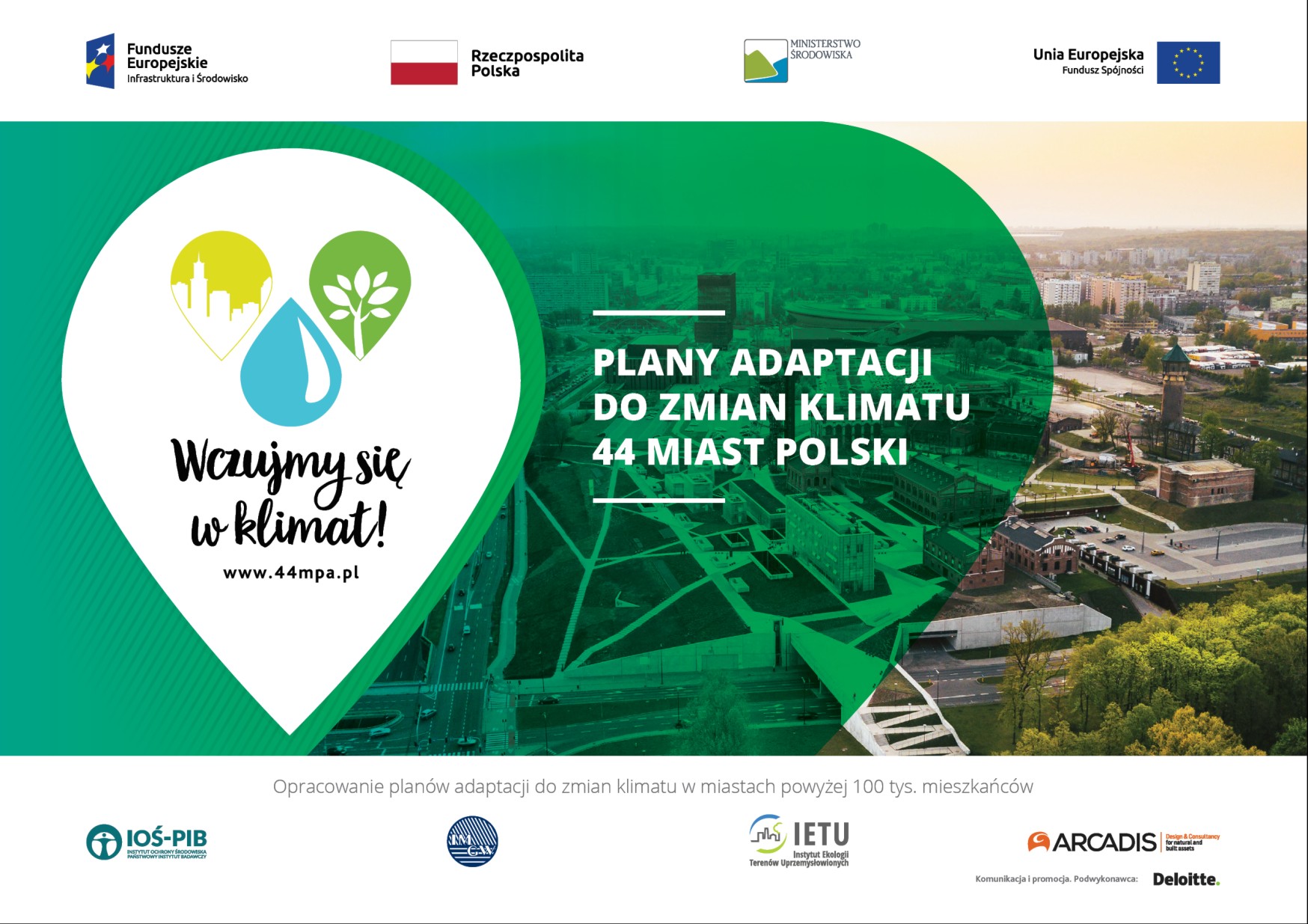

Project Climate Change Adaptation Plans in 44 Polish Cities
– Urban Adaptation Plans – UAP
Read more in English [pdf, 234 KB]


The municipal Wroclaw subsidy program "Catch the Rain"
Read more in English [pdf, 328 KB]


Water absorbing geocomposite (WAG)
Read more in English [pdf, 406 KB]
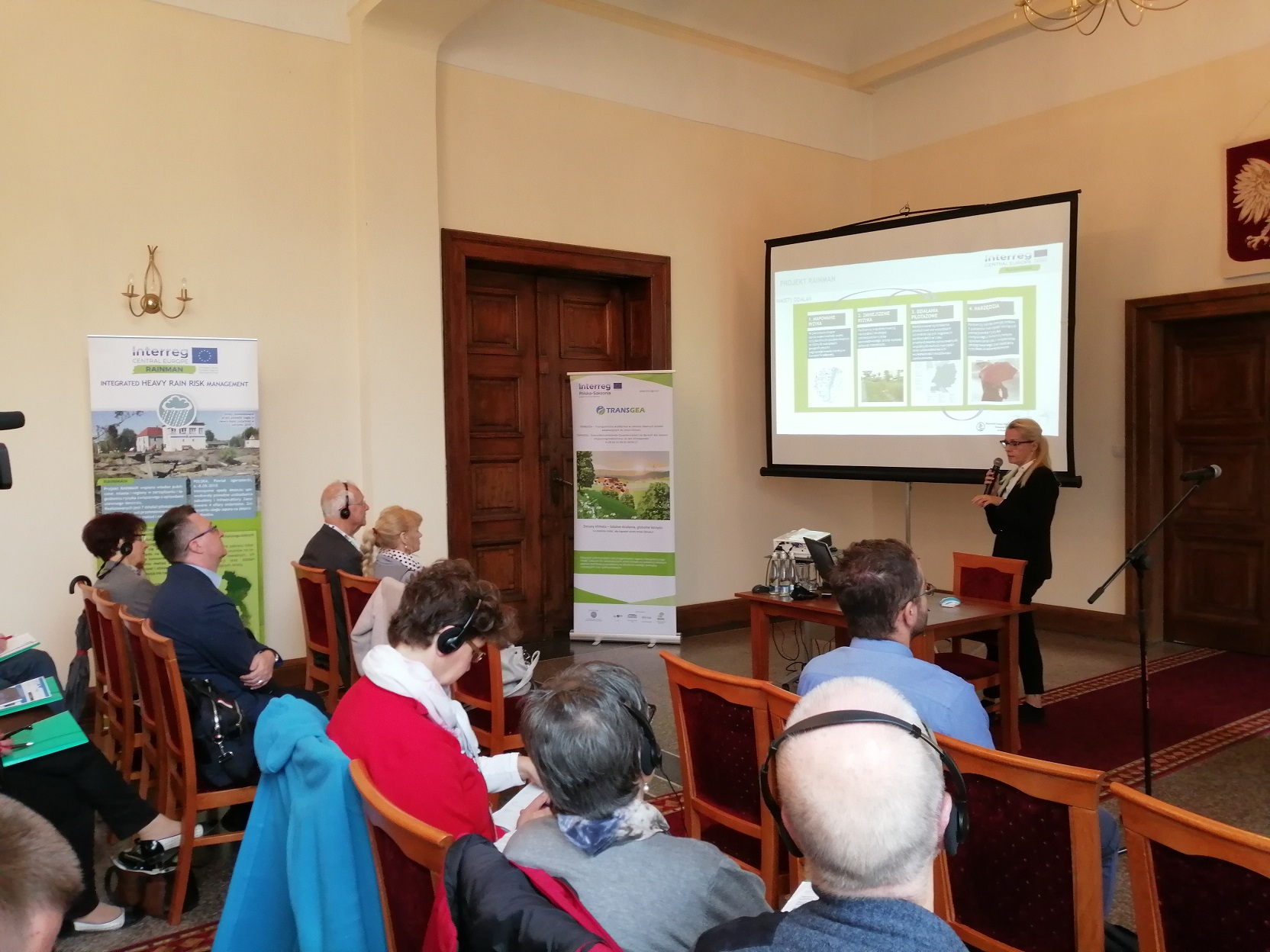


Local scale informative event
– increasing awareness on heavy rain phenomena, together with consequences and mitigation measures at local scale conference of TRANSGEA project
Read more in English [pdf, 221 KB]
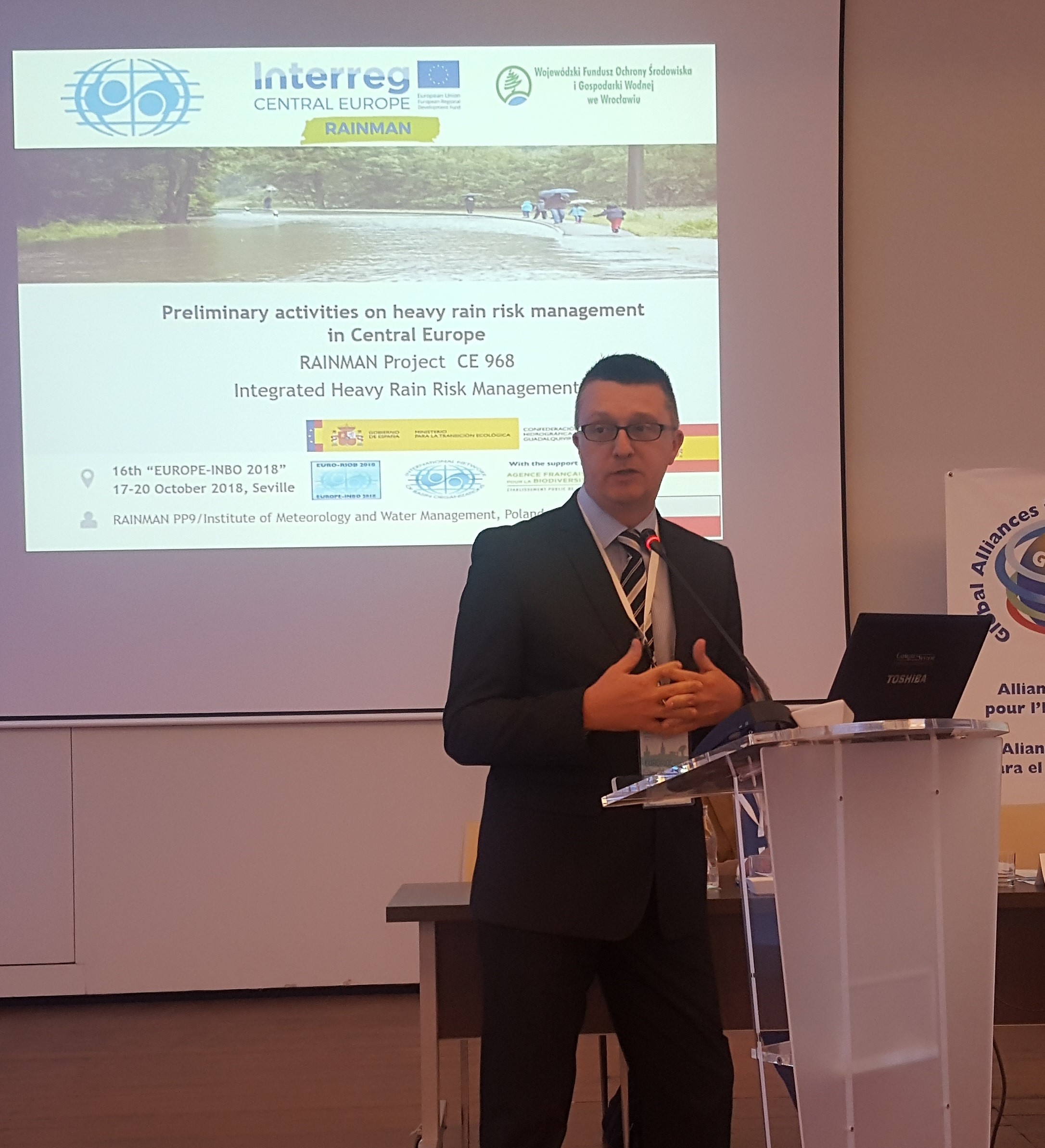

Increasing awareness on heavy rain phenomena
– together with consequences and mitigation measures at a wide scale at the EUROPE – INBO Conferences
Read more in English [pdf, 214 KB]
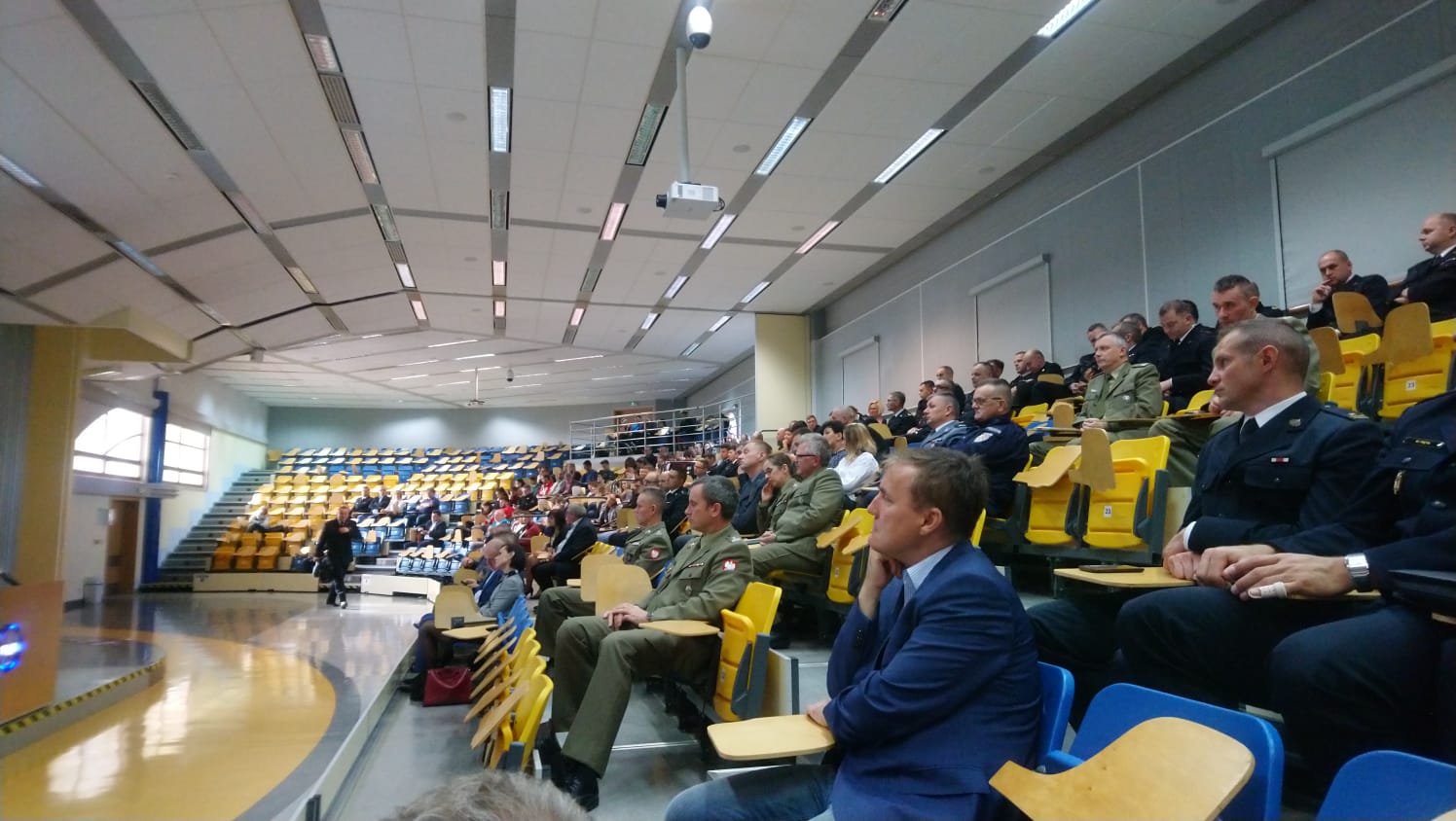

Conference on Integrated Emergency Services in Crisis Situations
– Session I – Innovative solutions in crisis situations
Read more in English [pdf, 159 KB]
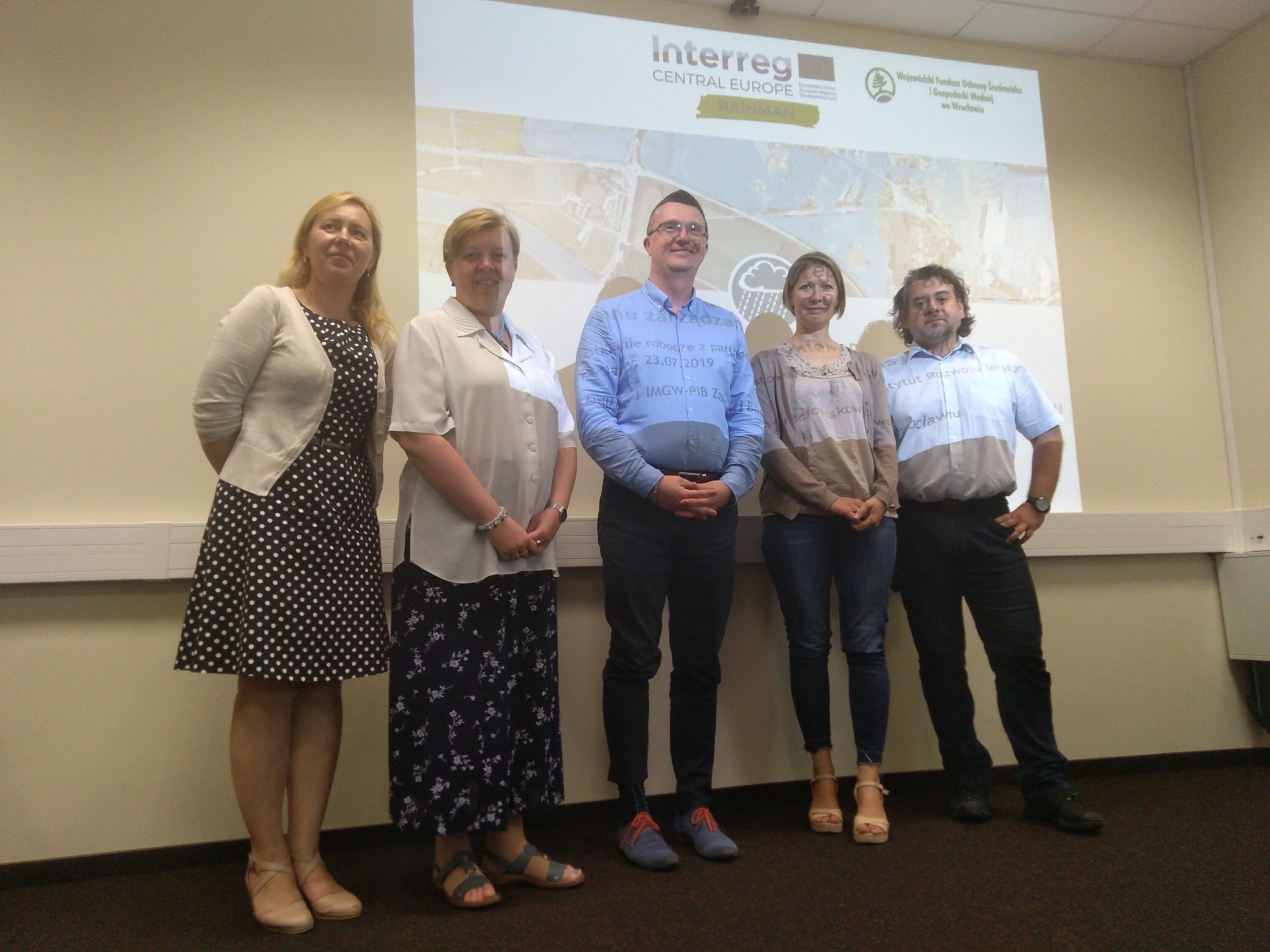

Dissemination meeting
– at the Institute for Territorial Development
Read more in English [pdf, 181 KB]
THE ZGORZELEC COUNTY
The Zgorzelec County is located in the south-western part of the Lower Silesia at the state border between Poland and Germany, running on the river Nysa Łużycka, while its southern border is the state border with the Czech Republic. Most of the area of Zgorzelec County is located within the Nysa Łużycka basin. The county area has a size of 839 km2, it is inhabited by about 91 000 citizens. The biggest towns are Zgorzelec (31 089 inhabitants) and Bogatynia (17 984 inhabitants).
In the land use structure the largest surface area is covered by forest – about 49%, agriculture areas – 39,5%, urban areas – 6,1%. In the county, the altitude varies from 30 to 620 m a.s.l.
Zgorzelec county is located in the area of the Śląsko-Łużycka Lowland (northern part) and the Zachodniosudeckie Foothills (southern part). In the southern part there are lignite deposits mined in opencast mine.
Heavy rain events resulting in flash floods are one of the main natural hazards in Zgorzelec county.
In recent years, a serious, extraordinary event of intensive rainfall resulted in a flash flood in the Nysa Łużycka catchment, which took place on 6-7 August 2010. Heavy rainfall caused rapid surface runoff and triggered destruction of the Niedów dam at the Witka river (tributary of Nysa Łużycka). Locally, the highest intensity of rainfall reached almost 60 mm/hour. The material losses exceeded 225 mln PLN in Bogatynia community only.
In the evening of 29th July 2013, the Zgorzelec county was affected by thunderstorms and heavy rainfall. The meteorological station at Bogatynia recorded 40 mm (40 liters per m2) of precipitation in total within one hour. In the entire county, the fire brigades had to cope with local floods. A lot of basements, courtyards, garages and streets were inundated.
Local physical-geographical conditions and land use of the catchment contribute to the development of flash floods. A number of factors that actively influence the process of surface runoff was considered in order to identify small catchments with a high flash flood potential. In our pilot area the method developed by T. Bryndal (2011, 2014) that was used for the Polish Carpathians catchments was applied.
The applied method involves the following steps:
1. Identification of catchments where pluvial flash flood events occurred.
The database of flash floods (FF) that occurred in Poland from 1971-2010 was the basis for the identification and selection of small catchments affected by FF. The database of FF was developed within one of the results the Klimat project implemented in by IMGW-PIB and co-funded by ERDF.
In our study the set of 33 small catchments affected by FF were selected. Those selected catchments are located in the Sudety Foreland and the Western Sudety Mountains (Province of Lower Silesia).
2. Selection and calculation of the physiographic and hydrological parameters and land use in the catchments affected by pluvial flash floods.
The selection of the parameters was based on the following criteria: well-documented parameter in scientific literature as a factor with significant impact on the surface runoff and formation of pluvial floods; sufficient data to calculate those parameters. Finally, 21 parameters were calculated. The parameters describe:
- physiographic conditions of the basin, e.g. catchment size, maximum length of the catchment, average width of the catchment, shape index, relative height, average slope gradient, average slope inclination of the main valley,
- hydrological conditions of the basin, e.g. stream network density, approximation coefficient, the CN parameter (calculated on the basis of soil and land use maps),
- structure of land cover, e.g. low-density housing, high-density housing, forest area, arable land, road network density.
The specified parameters were calculated using ArcGIS 10.2 software based on the following data: DEM (digital elevation model), digital soil map (1:100 000) and Topographic Database (BDOT10) i.e. location of buildings, roads, river network, protected areas, forest areas.
The calculated parameters for the set of 33 identified catchments were collected in a GIS-database. At next, the statistical analysis (descriptive statistics, e.g. mean, median, standard deviation, coefficient of variability, quantiles) were carried out.
3. Typology of catchments prone to flash floods generation.
The cluster analysis was applied for the typology of catchments prone to flash flood development. Finally, the three types (A, B, C) of the catchments were identified. Those types vary in case of dimensions, relief and land use structure. Both types A and B are small size catchments (4-10 km2), primarily dominated by arable lands and a rather small area cover by forests and nearly 10% of urban area. The CN parameter is high. In contrast, type C contains the largest catchments (app. 25 km2) characterized by a large area of forests and small urban terrains (app. 3%).
4. Identification of small catchments prone to pluvial flash floods in the Nysa Łużycka river basin based on developed types.
The GIS-database for 294 elementary catchments for the Nysa Łużycka river basin was created. Parameters describe the physiographic and hydrological conditions and structures of land cover were calculated for each of the elementary catchments. These parameters were analysed in order to identify catchments similar to those in particular types (A, B, C).
The elementary catchments in the Nysa Łużycka river basin similar to those in types A, B, C have been identified and presented on the map.
The verification of the results showed a good agreement with independent databases i.e.: locations flash flood events (1971-2010) in the Nysa Łużycka basin and locations affected by heavy rain events (e.g.: flooded roads) provided by State Fire Service in Zgorzelec County.
BROWSE OUR STORIES
- All
- Assessment and mapping
- Risk communication



Flash flood hazard and vulnerability maps
– for Lower Silesia
Read more in English [pdf, 220 KB]



Local scale informative event
– increasing awareness on heavy rain phenomena, together with consequences and mitigation measures at local scale conference of TRANSGEA project
Read more in English [pdf, 221 KB]
THE CZERWONA WODA CATCHEMENT
The catchment of Czerwona Woda is mostly located in the Zgorzelec county in the Lower Silesian Voivodship (Pilot Action 6), and the south-western part of Poland. The Czerwona Woda river is 26 km long. The area of the catchment has a size of 131 km2 with mostly rural and agricultural use. Over 60% of the catchment area is non-irrigated arable land.
The Czerwona Woda catchment with its mostly rural character was affected by numerous fire brigade interventions due to heavy rain (status June 2020: 252 interventions). Therefore, the catchment was selected to conduct some preliminary analyses that are related to water erosion; the process of soil transformation and degradation as a result of surface runoff caused by precipitation.
Identification of areas with soil prone to water erosion – analyses of the factors contributing to the occurrence of water erosion carried out in the Czerwona Woda catchment (mostly located in Zgorzelec County).
The occurrence and intensity of water erosion depends on the soil type, rainfall intensity, the way of land use and can lead to a loss of land. Surface runoffs, on the other hand, occur as a result of limited infiltration of water into the soil, resulting in a flood hazard in neighbouring areas.
The analyses in Czerwona Woda catchment (case study) were carried out in 4 stages:
1. Analysis of soil susceptibility to water erosion
The first step was to assess the vulnerability of soils to erosion processes, such as surface runoffs. The soil and agricultural maps were used for the analyses. The soils occurring in the Czerwona Woda catchment were assigned to certain degrees of water erosion according to the adopted criteria. Soil susceptibility to water erosion depends on the type of rocks and soils formed from them. The higher the soil retention capacity, the greater its resistance to erosion processes.
2. Selection of areas with soils of considerable water capacity on impermeable undersoil
Analyses were carried out on the basis of geological maps with the inclusion of maps from stage 1. The aim of the analyses was to identify areas with significant water capacity, potentially exposed to surface runoff in the water saturation situation, due to the presence of an impermeable undersoil. Particularly exposed to runoff are shallow soils located on hard, weathered metamorphic rocks.
3. Detailed analysis of the slope map
The developed slope map was analysed for the slope in the area in terms of the degree of potential water erosion. The lines of equal slope were divided into classes according to the classification of Józefaciuk A. and Cz. (1999). At next, specific zones were selected in which the slope is greater than 10% and where, in all types of soils, the severity of erosion is at least moderate. A condition for the occurrence of water erosion is a slope in the area, which favours surface water runoff. The greater the diversity of the terrain level, the stronger the water erosion processes.
4. Analysis of land use
The analyses carried out identified such natural areas that are potentially resistant to water erosion, including: forest stands and a grass cover according to the Corina Land Cover map to exclude them from designating exposure zones. The protective effect of forest stands lies in binding the soil through a dense root system and a large interception of rainfall. On the other hand, the protective function of meadows and grasslands results from the ability to bind the soil through a strongly developed root system and it covers its surface with a dense mass of stems and leaves.
In the Czerwona Woda catchment, problem areas have been identified in places where there are factors contributing to the occurrence of water erosion. The designated areas were compiled with locations where fire brigade interventions were recorded as the result of heavy rain. The results of the analyses confirm the existence of areas vulnerable to soil water erosion in zones were the majority of fire brigade interventions also has been registered.
BROWSE OUR STORIES
- All
- Assessment and mapping
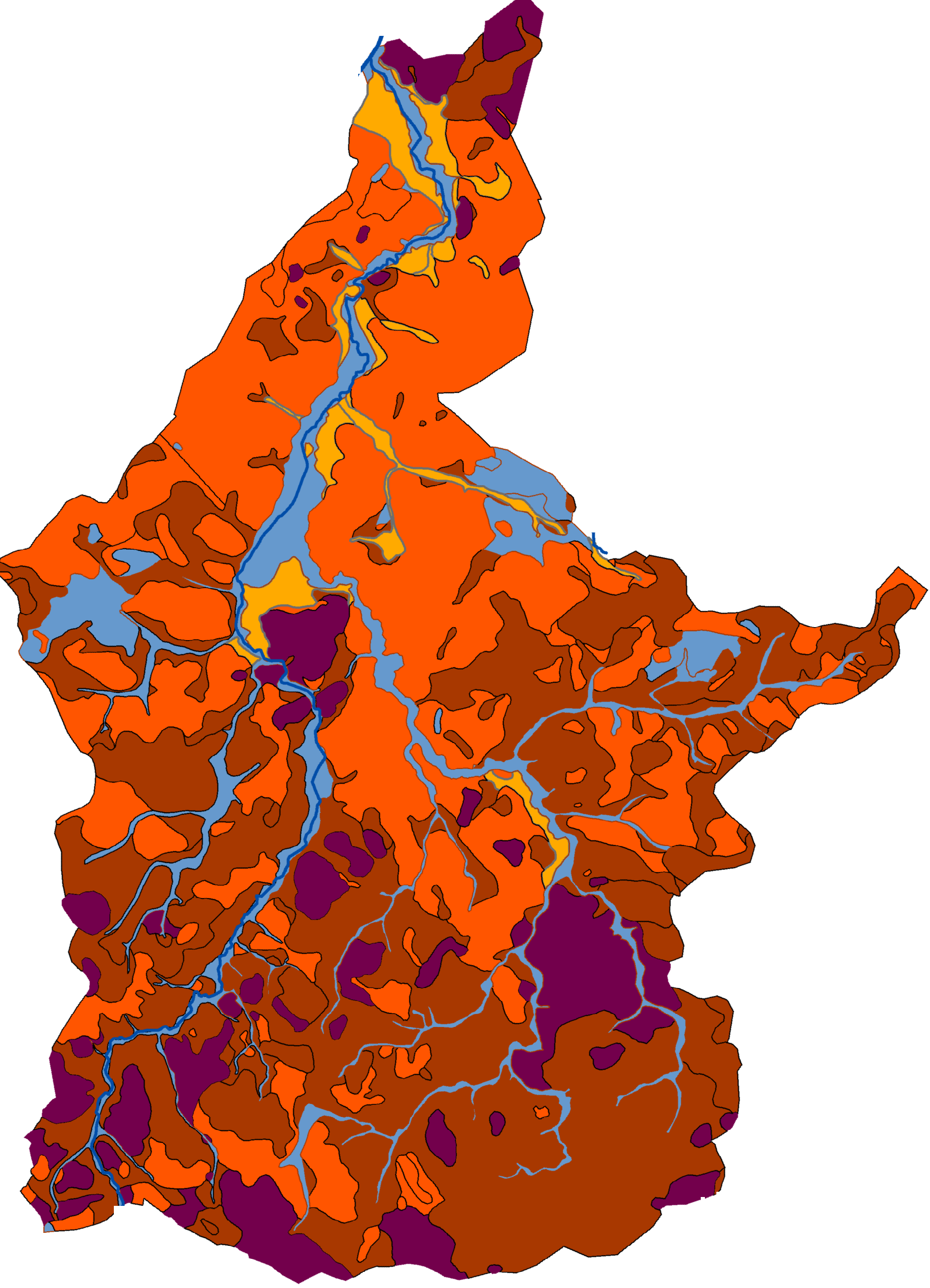

Mapping of areas vulnerable to soil water erosion
– Determination of problem areas in the Czerwona Woda catchment (Case Study)
Read more in English [pdf, 344 KB]
DOWNLOAD
1. Lesson 1 – Evaluation of heavy rain risk (presentation and teaching instruction) – considered subjects: climate and weather, climate factors, meteorological measurements and observations, weather and weather-related indices, climate changes, consequences of climate changes, heavy rains – definition, characteristics, examples and consequences, storms (including safe behaviour), weather forecasts and warnings.
Download [PL; zip; 4.9 MB]
2. Lesson 2 – Methods for dealing with floods caused by heavy precipitations (presentation and teaching instruction) – considered tasks: basins, retention capacities of the region (basin), floods – definition, sources, effects of heavy rain (local flood), monitoring of flood phenomena, strategy on mitigation of flood effects, RAINMAN-Toolbox – description of „tools” carried out in the project, actions on early warnings, spatial planning, prevention, concept of rainfall water collection (within prevention, protection, preparedness, recovery), examples of other actions, solutions on blue-green infrastructure (BGI) – ideas related to excessive rainfall water near your house.
Download [PL; zip; 5.2 MB]
3. Board Game – board, instruction and question cards on heavy rain, their consequences, and how to reduce risk.
Download [PL; zip; 2 MB]
Download [EN; zip; 1.8 MB]
4. Questionnaires – 3 versions, each contains 3 questions on the thematic scope of the package.
Download [PL; zip; 381 KB]
Download [EN; zip; 369 KB]
CATALOGUE OF GOOD PRACTICES, titled “Heavy rain risk management good practices developed by the experience of the pilot regions in Central Europe”, describes the achievements and implementations of the RAINMAN project partners in pilot regions.Download [EN; pdf; 6 MB]
ACTION PLAN FOR NON-TECHNICAL MEASURES AND RECOMMENDATIONS FOR SPATIAL PLANNING is a document that provides recommendations for spatial planners and end-users on prioritizing activities as the basis for optimizing land use and flood protection strategies.Download [EN; pdf; 2 MB]



